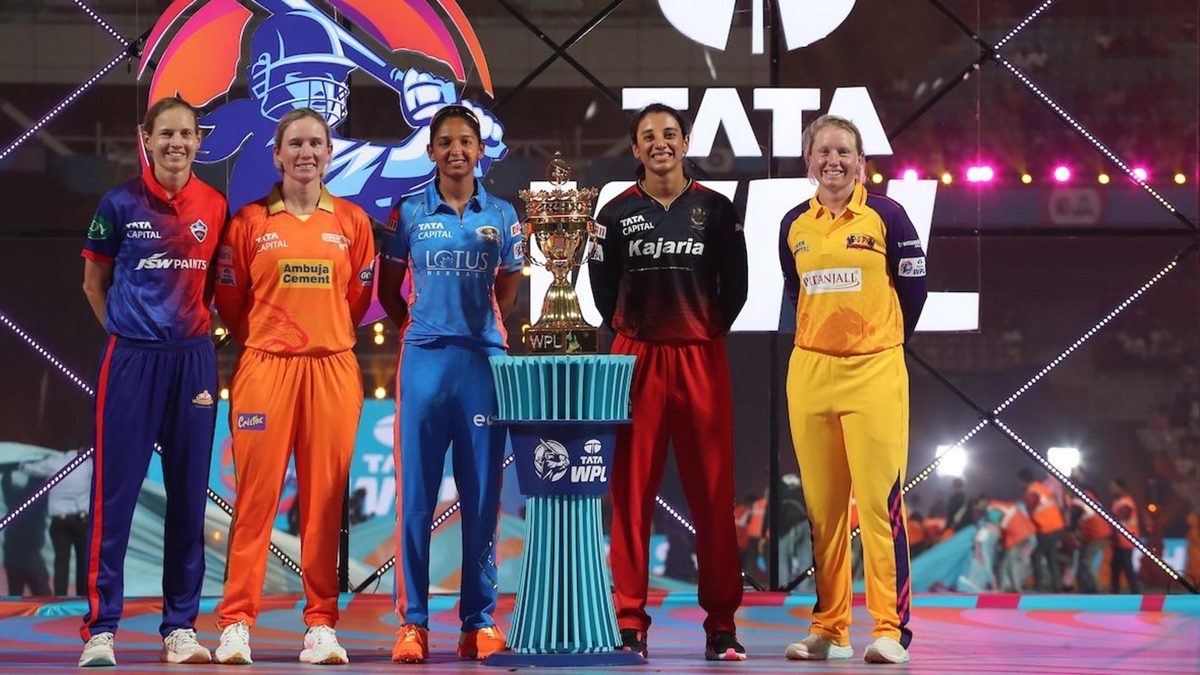
It arrived like the Issy Wong 126kph-er in the opening game and finished as quickly as her hat-trick in the Eliminator – in no time at all, the first Women’s Premier League has come and gone, with Mumbai Indians lifting the trophy.
What have we learnt? What would we like done differently for WPL 2024?
And no, it’s not too early to start getting excited about season 2.
Teams have time. Let them use it well.
The accelerated timeline for the tournament, from its announcement to the teams being formed, the auction, training, bonding over stubborn Holi hair colour, and finally the competition itself, meant teams didn’t have the time to arrive at their best.
In year two, there should be fewer excuses for this. (We’re looking at you, RCB.)
Teams should quickly put scouting systems in place. While the issue of lack of data to base selections on will take a few more seasons to address, talent hunts and having eyes on local tournaments can happen right away.
Now that the support staff is better aware of local players, their development too should take priority. For instance, Jonathan Batty, Delhi coach, said the support staff planned to share with the team areas on which they should work ahead of next season. He hoped to get local players into camps and encouraged domestic names to put pressure on senior players.
“The challenge,” he said, “is for them to go away and get slightly fitter, slightly stronger, just carry on developing their games.”
May the carnival meet more fans
Back in 2018, when India, Australia and England played a tri-series at Brabourne Stadium, I could whisper my deepest secrets from the stands and the fielder at long on would gasp – the stadium was so empty. So, it was another ‘women’s cricket has come a long way’ moment when the CCI hosted a sell-out crowd of over 30,000 for the WPL final.
The crowds all tournament, at both venues in Mumbai, were fantastic. The Mumbai Indians faithful, the Jemimah Rodrigues friends and family corner, and the Ellyse Perry fan club combined to make for an electric atmosphere. With the WPL, as with the India-Australia series last year, Mumbai showed there was an audience for ticketed women’s cricket.
Next time, another city or two should be given a chance to do the same.
Looking at the Future Tours Programme, Australia, England and New Zealand all have assignments in March and April. So, there may not be a long enough window for a full home-and-away tournament to be scheduled in 2024.
However, there should be room on the schedule for the tournament to go to at least two or three cities, giving more fans a chance to experience the drama. And also inject more drama into the proceedings with different conditions.
Will the domestic MVPs please stand up?
Overseas stars were the ones winning teams the matches this season. Mumbai’s Saika Ishaque (No.12) and Delhi’s Shikha Pandey (No.15) are the only Indians in the top 15 of WPL’s most valuable players list. They are also the only two local players among the top 10 wicket-takers, while Harmanpreet Kaur and Shafali Verma are the home representation in the top 10 for batting.
While there were a few other consistent local players who earned the backing of their teams – think Harleen Deol, Yastika Bhatia, Shreyanka Patil, D Hemalatha – and a few others who impressed in the few opportunities they got, there weren’t too many breakout Indian performers this season.
This is fine: for now
We know that a significant ability gap exists between domestic and international players. Indeed, one of the main purposes of the WPL is to bridge that gap, to develop Indian talent by leaning on the experience of the overseas players. And by next season, we should start seeing the effects of this.
“I’ve been really impressed with the quality of Indian domestic players,” said Batty after the final. “They’ve picked our brains as coaches, they’ve leaned on the senior players. The progress these girls have made in the last three-four weeks, we’ve been very impressed with them.”
“I’m sure next season will be more interesting, more competitive,” added Harmanpreet Kaur, India and Mumbai captain. “The domestic players, they will surely have learnt a lot from the overseas.”
All that knowledge could come in handy if national duty keeps more foreign stars away next season.
Variety to the contest between bat and ball
Tired, low-scoring pitches are the bane of women’s cricket. So kudos to the BCCI and their curators that there were none in sight for the WPL.
If anything, the BCCI perhaps went too far the other way, in offering a road and pulling the boundaries in to encourage the flow of fours and sixes.
ICC’s playing conditions for women’s T20Is put the boundary sizes at between 60 and 70 yards. The WPL put this at between 55 yards (50.29m) and 65 yards (59.43m) from the centre of the pitch. Some discretion is allowed as per the rules, as in the case of the fine leg boundary at the DY Patil, which was just 42m from where the batter stood according to the broadcast.
Even if sixes don’t always fly in this direction, just having shorter boundaries changes how fielding captains (more caution) and batters (more intent) approach the game.
On cue, the first five days of the tournament saw six totals of 170 or more, with Delhi’s 223-2 against Bangalore in the second match the highest score.
While average run rates fell in the second half of the tournament and pitches got harder to bat on, it remained a tournament where the bat dominated. A greater variety of surfaces, perhaps in different cities, would test the depths of the squads more and allow them to build teams accordingly.
The WPL is off to a great start. Here’s to bigger and better.








